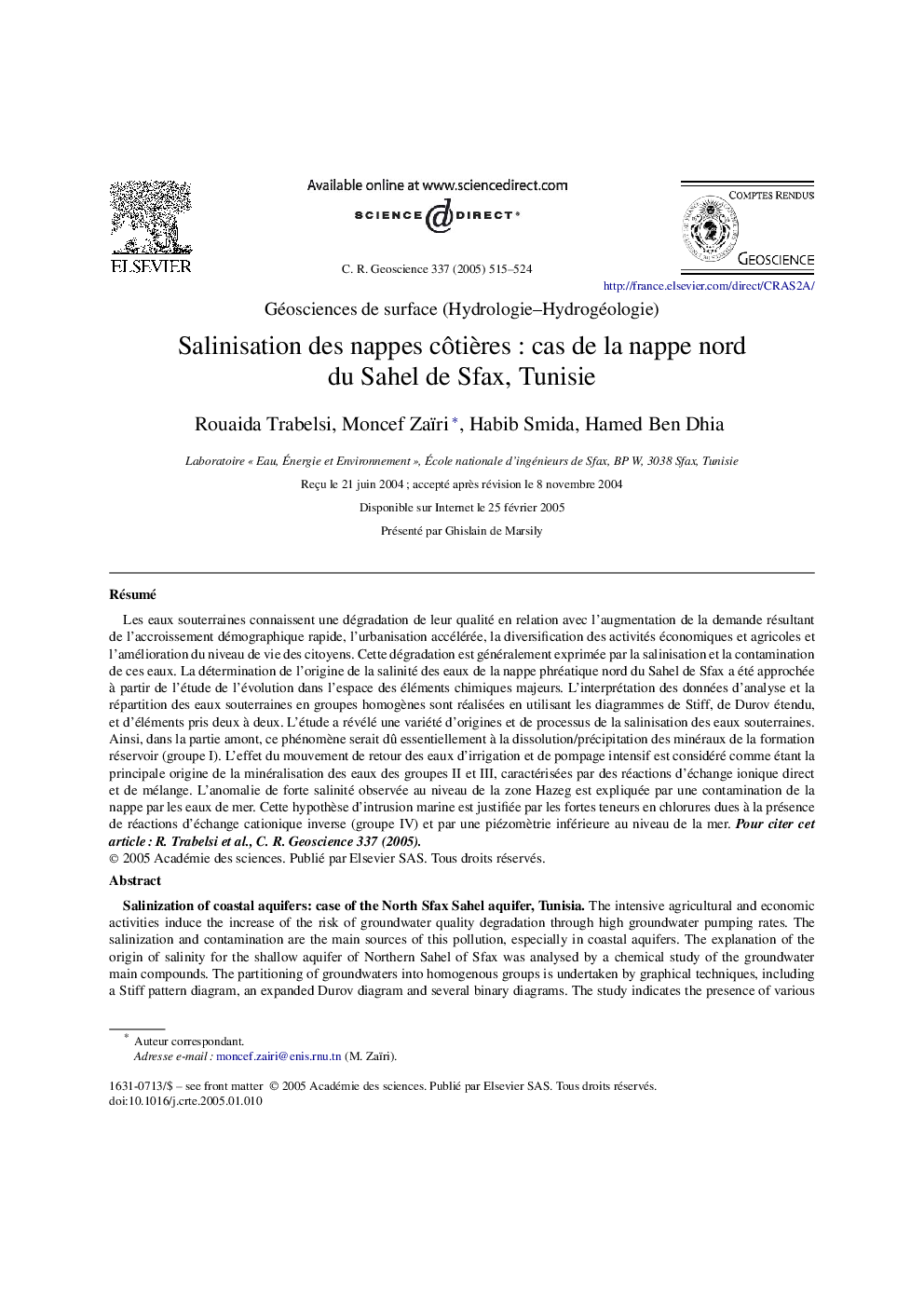| Article ID | Journal | Published Year | Pages | File Type |
|---|---|---|---|---|
| 9462012 | Comptes Rendus Geoscience | 2005 | 10 Pages |
Abstract
The intensive agricultural and economic activities induce the increase of the risk of groundwater quality degradation through high groundwater pumping rates. The salinization and contamination are the main sources of this pollution, especially in coastal aquifers. The explanation of the origin of salinity for the shallow aquifer of Northern Sahel of Sfax was analysed by a chemical study of the groundwater main compounds. The partitioning of groundwaters into homogenous groups is undertaken by graphical techniques, including a Stiff pattern diagram, an expanded Durov diagram and several binary diagrams. The study indicates the presence of various salinization processes. In the recharge area, salinization is the result of dissolution/precipitation of the aquifer formation material (group I). The irrigation water return and the intensive pumping have been identified as major sources of salinization in the south by direct cation exchange and mixing reactions (groups II and III). The anomaly of high groundwater salinity observed near the Hazeg zone was explained by the presence of a seawater intrusion in this area. This hypothesis is related to the high chloride concentration, to the presence of inverse cation exchange reactions (group IV), and to the piezometric level inferior to sea level. To cite this article: R. Trabelsi et al., C. R. Geoscience 337 (2005).
Keywords
Related Topics
Physical Sciences and Engineering
Earth and Planetary Sciences
Earth and Planetary Sciences (General)
Authors
Rouaida Trabelsi, Moncef Zaïri, Habib Smida, Hamed Ben Dhia,
